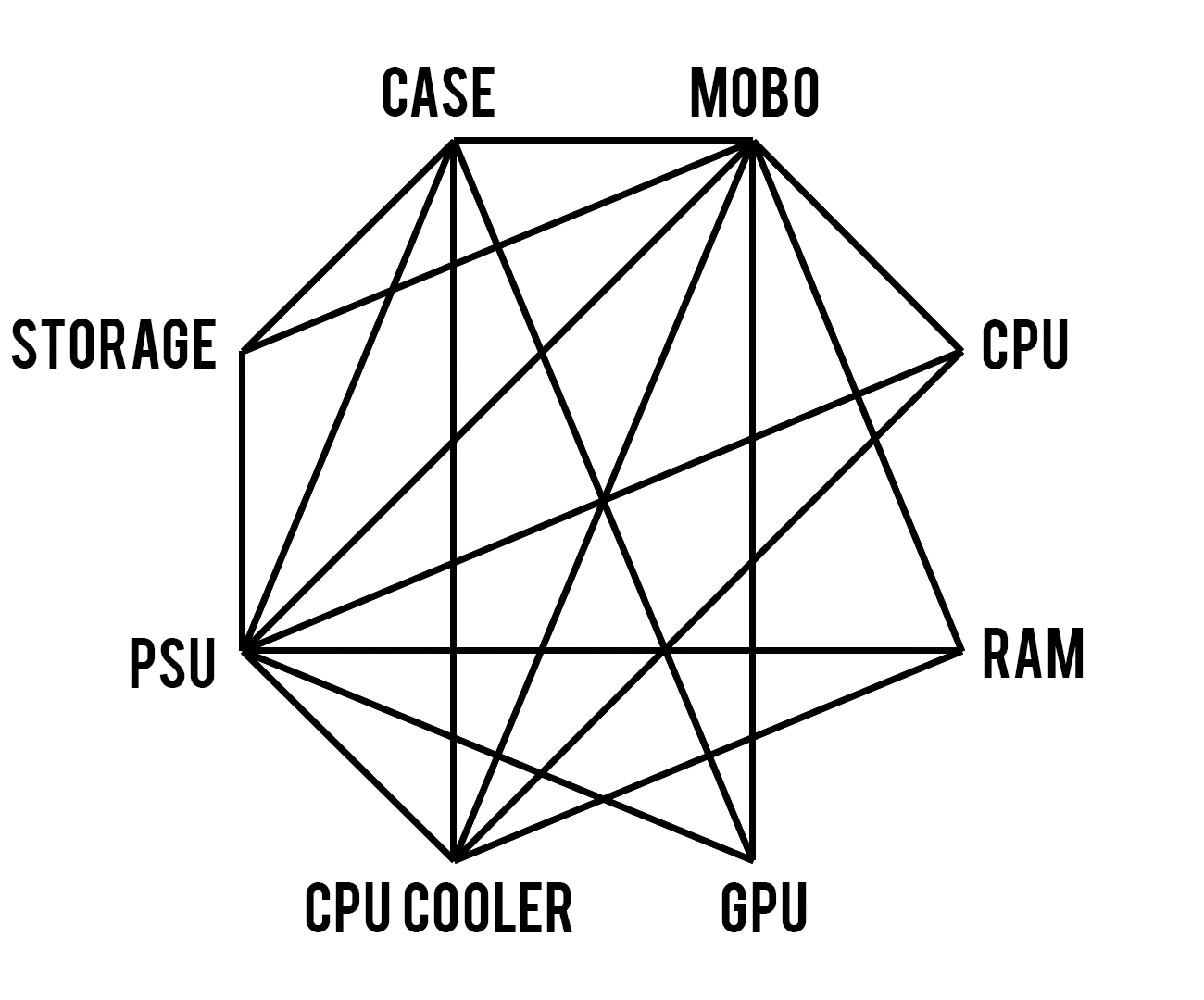
There are generally eight different computer parts that one needs to keep in mind for solid compatibility when building a desktop from scratch. As illustrated, the chassis or case has a compatibility relationship with five of the eight components. I found this graphic in a Bitwit YouTube video » How to Choose Parts for a PC! The Ultimate Compatibility Guide!
Note: Although there are usually eight general categories of components, specialized systems may have a larger number of interacting components, requiring more detailed consideration to avoid conflicts.
In most cases and in most cases (pun intended), there will be some level of tolerances marked to ensure the builder is aware of a particular case’s limits on what can and can’t be installed into it safely. These are usually provided in the product’s description, in a user manual, or stamped into the frame of the case. This information can help determine what motherboard standoffs go where, what size fan(s) can be installed, and maximum CPU cooler height.
There are also various standardized sizes for computer cases. These range from gigantic E-ATX cases all the way down to the rarely seen, super-small Pico-ITX cases. Most PC enthusiasts seem to flock toward Full ATX, Mid ATX, or Micro ATX. These are mostly standard sizes that make up the vast majority of aftermarket computer cases.
My personal preferences are between Micro ATX and Mini ITX. As I never use more than one graphics card at a given time and store >90% of my data on my 16 TB Synology NAS, I rarely need a very roomy chassis. My current build is housed in a Fractal Design Define Mini C. This is a steel-bodied, Micro ATX case, with noise dampening foam, fan filters from all sides, and zero RGB. It’s a silent black box that sits in the corner and that’s just the way I like it.
Note: In the two years that have passed since I wrote the majority of this essay, I have changed cases a number of times: usually switching between the above Define Mini C; a Cooler Master Elite 120 Advanced; and a Thermaltake “The Tower” 100.
I don’t always use the “black box in the corner” style of case. As I noted above, I own a variety of cases that stray slightly from this format and into a slightly more stylish territory (depending on your definition). I’ll also often switch between some of these cases for my
- Cooler Master Elite 120 Advanced (black)
- Fractal Design Define 7 (solid panel)
- Fractal Design Define Mini C (solid panel)
- Thermaltake The Tower 100 (black)
- Thermaltake Core V21 (plexiglass window)
- Some large E-ATX custom made aluminum case I was gifted
- Some unbranded, steel test bench
The Elite 120 fits in my backpack; the Define 7 is enormous and can fit over a dozen 3.5” HDDs; the Define Mini C is a manageable size and solid as a rock; the Tower 100 has a vertical design and is good for showing off; the Core V21 is cube shaped and I have my guest gaming PC in it currently; and the last two are mostly used for testing purposes.
–
2021-12-08 - original article written 2023-06-15 - revised and updated
